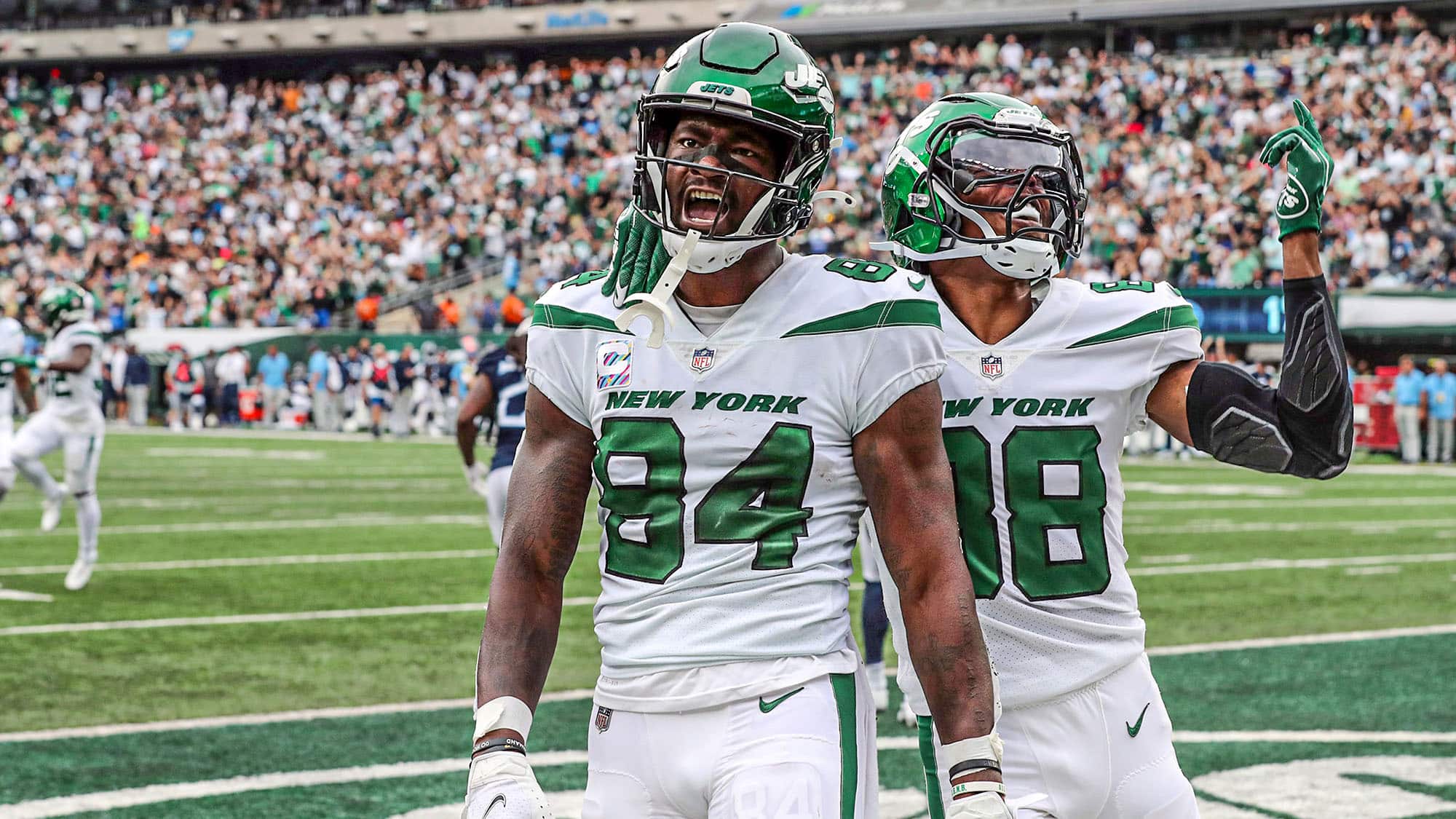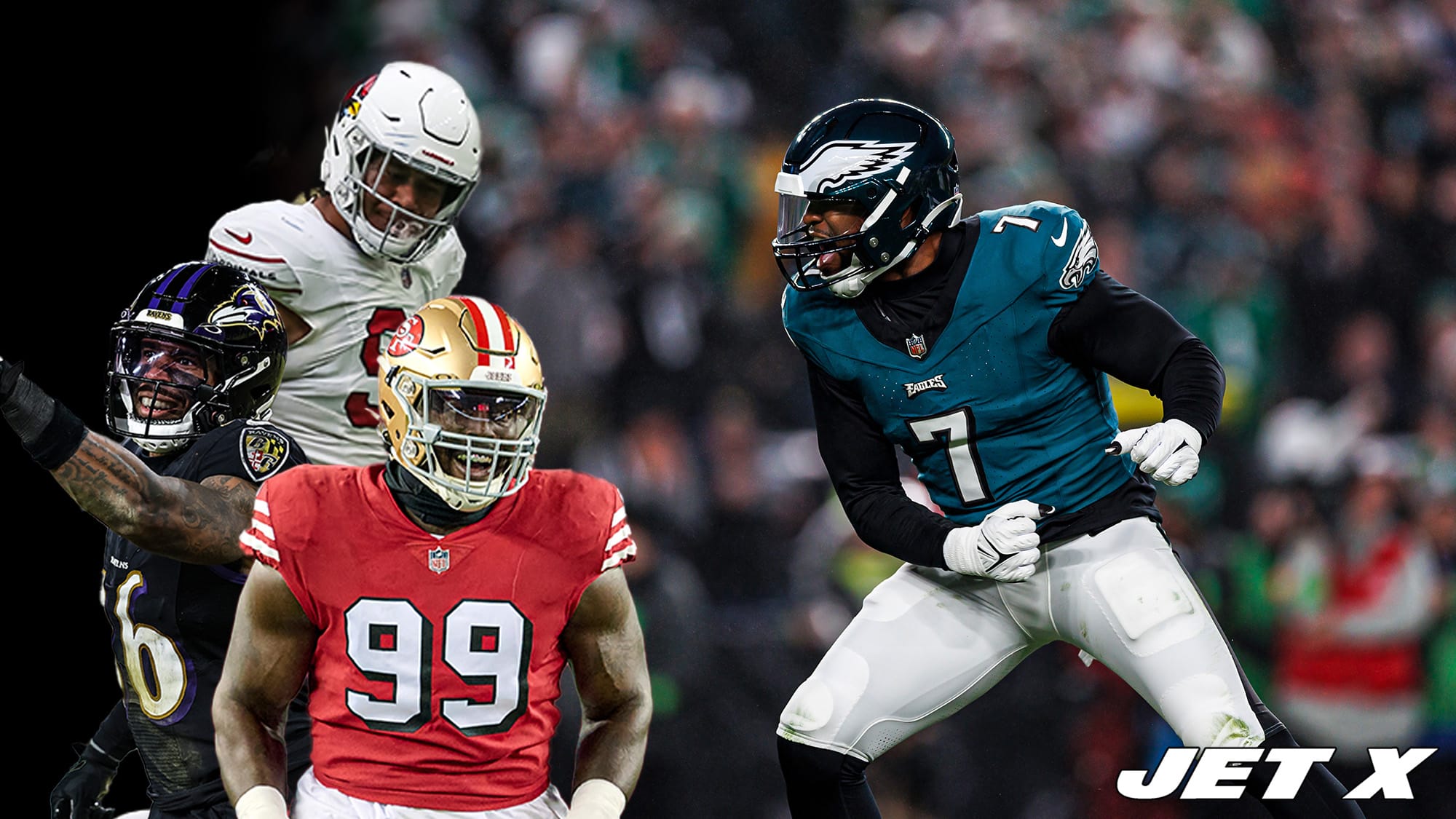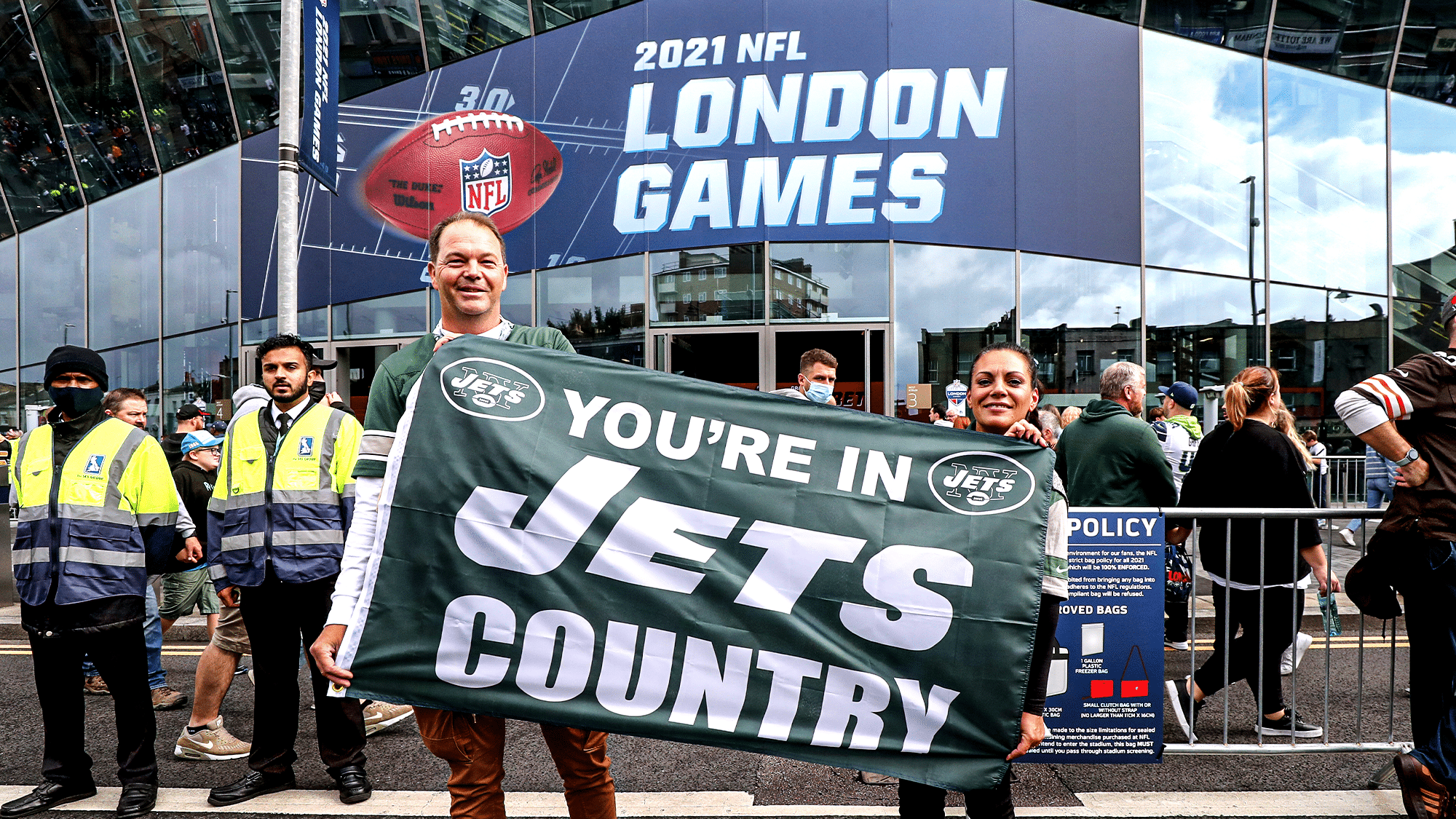Corey Davis’ 2021 disappointment should not last
The first season of Corey Davis‘ three-year, $37.5 million contract with the New York Jets was an underwhelming one.
In nine games prior to season-ending core muscle surgery, Davis averaged 3.8 receptions for 54.7 yards, a sizable drop from his 4.6 receptions for 70.3 yards in a breakout 2020 season for the Titans.
Davis also saw his efficiency worsen. After producing a top-tier average of 10.7 yards per target in 2020, he generated a merely decent rate of 8.3 yards per target in 2021. Plus, just 39.0% of his targets resulted in a touchdown or first down, a similarly mediocre number that is a far cry from his elite rate of 53.3% in 2020.
While Davis’ 2021 season was certainly a disappointment, there are reasons to believe he will rebound strongly in 2022.
The problems that plagued Davis are unlikely to persist
The main factor that Davis has going for him is this: his primary issues in 2021 were fixable things that he was previously great at. It was an outlier year for him in numerous categories. He should be able to normalize his performance in those areas going forward, thus bringing his overall production back up to where the Jets need it to be.
Davis’ lackluster production was primarily the result of a severe spike in his ball-handling numbers. Despite playing barely more than half the season, he had a career-high six drops, two more than his previous high. He also had two fumbles after fumbling only once in each of his first four seasons.
In 2021, Davis dropped 15.0% of his catchable targets – more than 2.5 times higher than his career rate entering the season (5.9%).
Davis also was not himself when it came to securing 50-50 balls. He caught 6-of-13 targets that were deemed “contested” by Pro Football Focus, a 46.2% rate. Over the previous three years, Davis’ contested-catch rate was 62.5%, ranking fifth-best among qualified wide receivers over that span.
In the short term, Davis’ issues with drops, fumbles, and failed contested catches were obviously extremely costly for the Jets. However, as we look forward, those problems are far less damaging to his future than if he struggled with things like fitting in the scheme, creating separation, flashing explosive-play ability, making plays with the ball in his hands, and giving full effort.
Davis did all of those aforementioned things, showing in spurts that he has the ability to be a highly impactful weapon in New York. He just flat-out wasn’t catching the ball.
And this is encouraging regarding his long-term outlook.
Most likely, Davis’ drop, fumble, and contested-catch rates will move closer to his career averages in 2022. Whether he gets back to the sky-high peaks that he showcased in 2020 is uncertain, but his 2021 catching numbers were so outrageously far from his career norms that it would be a shock if he maintained those levels. Regression to the mean is probable.
Davis should be ready to explode simply by normalizing his catching
Just by getting his catching numbers back to normal, Davis’ overall production should be just fine.
How do we know this? Well, while his terrible catching rendered it moot, Davis showed in many areas throughout his first season as a Jet that he is a talented player with a high production ceiling in this Jets offense.
Prior to his final game of the season in which he exited early, Davis was averaging 7.0 targets per game, a would-be career-high that slightly beats out his 6.6 targets per game from 2020. Since most targets are earned by the player himself (rather than schemed-up), this is a good indicator of Davis’ skill. He did a solid job of winning on slants, digs, outs, and crossers to earn a healthy volume of opportunities that gave him the chance to put up big numbers.
Davis also showed big-play ability as he averaged a strong 14.5 yards per reception, ranking 21st out of 93 qualified wide receivers (78th percentile) as of the conclusion of Week 13. It is the second-best mark of his career, slightly trailing his 15.1 yards per reception in 2020, which ranked 13th out of 94.
So, when he did pull the ball in, Davis was just about as explosive for the Jets as he was in his 2020 breakout season for Tennessee.
Here’s the problem: Davis only caught 57.6% of his targets in 2021, which currently ranks 79th out of 93 (15th percentile). That is a steep dip from his career-high 70.7% in 2020, which ranked 31st out of 94 to supplement his No. 15 ranking in yards per reception.
Simply by finishing catches at a career-average level, Davis could have put up similar numbers to the previous season.
Davis caught 34 passes in 2021. On the same volume of 34 receptions, if Davis dropped passes at his previous career-average rate of 5.9% instead of his 2021 rate of 15.0%, Davis would have had approximately two drops instead of his actual total of six, boosting his reception total from 34 to 38. That would push his catch rate all the way up from 57.6% to 64.4%.
On contested targets, Davis caught 6-of-13 passes in 2021 (46.2%). If he instead caught 62.5% of those 13 passes (his rate from 2018-20), he would have had approximately eight contested catches instead of his actual total of six. Toss in those two extra contested catches alongside his four subtracted drops, and now he has 40 receptions on a 67.8% catch rate.
If those six added receptions each yielded his season average of 14.5 yards, Davis would add about 87 yards to his actual total of 492 yards, increasing his yards-per-game average from 54.7 to 64.3.
That’s a huge leap. For instance, in 2020, Sterling Shepard ranked 41st in the NFL with 54.7 yards per game while Cole Beasley ranked 25th with 64.5.
Basically, Davis can leapfrog more than 15 players on the wide receiver leaderboard just by getting back to catching balls at the exact same rate he did as a member of the Titans.
Davis also showed promise with his abilities after the catch. He was credited with forcing seven missed tackles on 34 receptions, a rate of 0.206 per reception that ties his career-high. For reference, that is nearly double the 2020 league average for wide receivers (0.111). Dropping passes in the middle of the field prevented Davis from extrapolating the benefits of this talent.
Effort was not an issue for Davis, either, which is a common problem for disappointing free agents who sign lucrative deals. Davis lived up to his reputation as a tenacious blocker, earning a run-blocking grade of 80.1, which currently ranks third-best out of 93 qualified wide receivers. The competitive drive was clearly still there.
It’s as simple as this: Davis usually did almost everything right until the moment he had to secure the football.
Sometimes, it’s as simple as catching the ball
There are many instances where wide receivers bust in their new homes because of issues that cannot be fixed. Whether it is a poor scheme fit, a lack of ability to create separation, a loss of effort, or another deep-rooted problem, not all disappointing wide receivers can easily turn around their woes.
Corey Davis is one of the rare disappointments who does have a good chance to rebound. All he has to do is get back on track in the most basic aspect of the position – easier said than done, but certainly more plausible than repairing most of the other obstacles that hold receivers back.
When watching Davis play for the Jets, you could see the raw gifts that made him a top-five pick and led to him eventually becoming a great player in 2020. He used his athleticism and size to position himself for difficult catches that many other receivers cannot make, high-pointing balls in picturesque fashion. He made plenty of defenders miss after the catch. Additionally, it was clear that he played with proper fundamentals as he attempted to catch most passes with his hands instead of his body.
Davis was also a good scheme fit who created separation consistently on multiple go-to route concepts in Mike LaFleur‘s offense. We even saw him flash chemistry with Zach Wilson on broken-down plays.
You just have to catch the ball for any of that to matter.
Perhaps Davis will continue to be a drop machine in New York. It’s certainly plausible. Maybe he isn’t cut out for the pressure of being a team’s “No. 1” guy.
If the law of averages holds up, though, then Davis should be just fine.
So long as he gets his drop and contested-catch rates back up to his previous career levels, everything is in place for Davis to be a good Jet in 2022.












